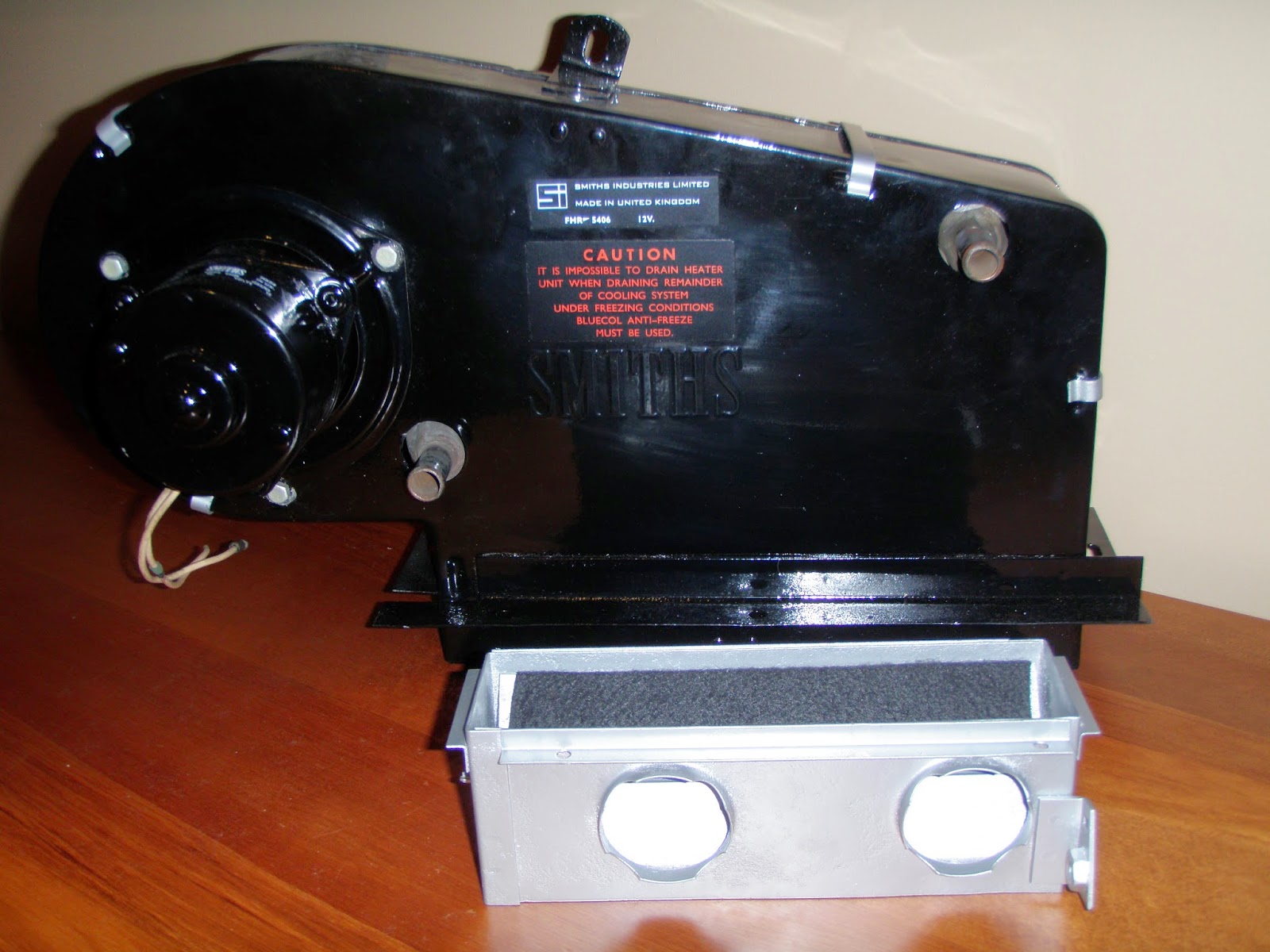June
2014
Every bit from the engine bay that’s been
taken off and refurbished/renewed is sitting in my study (wife is really happy
about that – but it’s warmer than the garage) waiting to be put back on, but
everytime I consider putting it back I kook at the engine bay and see something
else that needs to be cleaned or replaced otherwise it makes the new stuff look
ridiculous. So, the carbs, heater box manifold, rocker cover, etc have all been
renewed or rebuilt and looking pleasingly good and now I’ve taken the pedal box
out and the clutch and brake master cylinder because, what with the combination
of spilled brake fluid from the master cylinders and water leakage over the
years from the heater box, there is a significant amount of manky surface rust
in the area and I can’t in conscience put anything back until the area is
cleaned up, scraped back, primed and painted.
Of course, when you start taking
more stuff off, it can’t go back after refurbishment because it’ll make everything else look tatty. Guess I have no choice now
but to start pulling all the bits and bobs out of the engine bay in order to
eventually remove the engine and transmission enabling a full engine bay
stripping, priming and repainting.
Every nut, bolt, washer, spring, screw or
other component is carefully labelled and bagged in a ziplock bag. My policy is
to renew all the little things like screws, washers etc, but I still want to
bag the originals up so that I know what goes with what. I’m also almost
paranoid about the amount of digital pictures I take in order to document every
bit on the car so that I can refer back when I query where this or that piece goes.
June
1, 2014
Time to pull the brake and clutch master
cylinder out. Jeez, it’s rusty! Pulled the pedal housing off and saw the mess
the pedal hinges that push the hydraulic cylinders in. Plenty of WD40 sprayed
liberally over every movable joint a, nut, bolt and washer. Next day I attempt
to remove the hinge bolt holding the pedals to the piston actuators.
Stuck.Rusted.Welded. Fortunately Riley had refurbished the seats and greased up
the tracks but we hadn’t reinstalled them giving us better access to under the
dash and more crucially, the pedal area. Riley got under the dash (he’s
younger, smaller and more agile than me!) and removed the pedal springs and
then it should’ve been simply a matter of removing the nut holding the hinge
bolt on in the pedal box and then sliding the pedals off, removing the master
cylinders and then a standard disassemble. The hinge bolt was not budging from
the pedals.
There is a separation sleeve on the hinge bolt between the pedals
that had rusted into position and if there was room between the wing and the
pedal box, one could get a persuader tool and whack it into submission, but
there is a gap of about 3 inches that isn’t quite enough to get any force
applied to the hinge bolt to dislodge it. Unfortunately there is a bend in the
clutch pedal that makes it impossible to pull the pedal box out from the hole
in the firewall with the pedals still attached to the hinge bolt. The bolt must
be removed for the pedals to be removed for the master cylinders to be removed.
We spent about an hour using WD40, brute
force, impassioned pleading, false promises and bargaining to try and remove
it, all to no avail. Left it overnight to permeate.
Next day Riley and I took a more considered approach
to the problem and upon reflected deliberation used brute force to squeeze the
pedals together and just rip it out from its housing with the thought in the
back of our minds that we can always replace anything we might break.
As it turns
out, it was the only way to do it. Ended up having to break the copper pipe
that connects from the clutch to the clutch master cylinder, but that was a
sacrifice that had to be made as it was the only way to help remove the master cylinders. It was always going to
be easier to replace it with a new one for about $15. Quite happy to spend that
money rather than spend more frustrating time on trying to remove it.
June
2, 2014
More time just spent wire brushing every
part on the pedal box, master cylinders and the housing. Takes a few hours to
do and then to prime every component where necessary. Also, the actual Master
Cylinder canisters have been wire brushed back and then polished with Autosol/
Edelchromglanz metal polish. After a day to cure, the primed components are
then given the first of three coats of paint with a rub down in between every
coat with 600 grit wet and dry paper before finishing with a couple of coats of
acrylic clearcoat.
In the meantime, we’ve made an order once
again with MGOCSpares on the UK for a range of stuff and not just for the
cylinder box.
June
6, 2014,
Picked up the parcel of spares from DHL at
the airport.Got it home and Riley and I excitedly tore into looking at the
parts we’d bought. We’d bought a couple of new tin screw caps for the cylinders
instead of the plastic ones that are currently on them Put them on. Very nice!
In the meantime, wirebrushed and cleaned up
the rust on the surface of the backwall areas where the heater box and pedal
box was and because I’m not quite ready to pull everything off, I taped up a
few bits and bobs surrounding the area and quickly primed the wirebrushed and
sanded places to prevent any further rusting giving that as it’s getting into
winter over here, moisture is hanging around in the air.






























